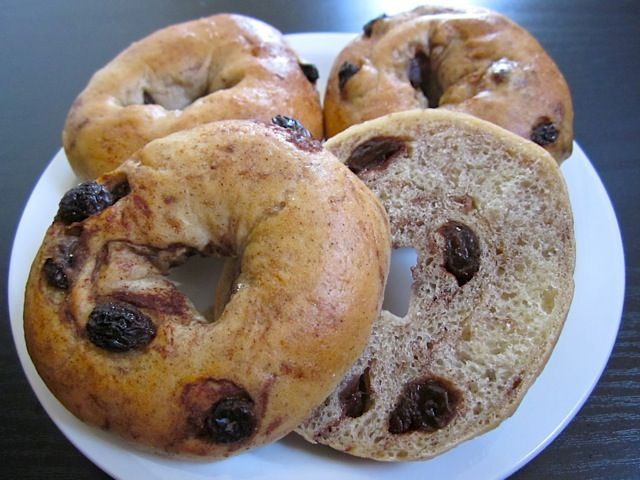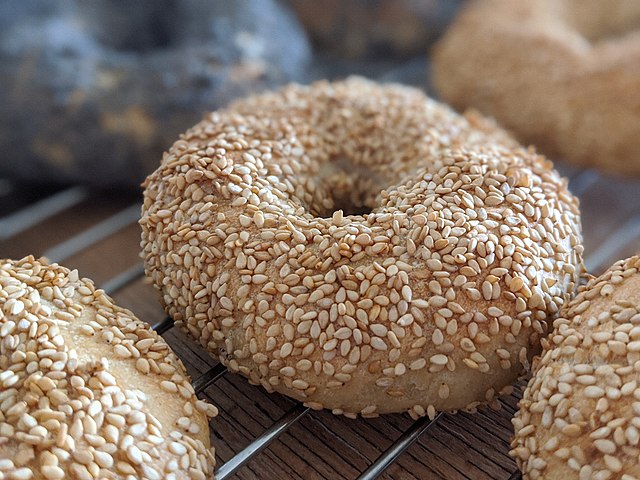If you’ve ever walked into a bakery and been hit with the irresistible smell of freshly baked bagels, you’re not alone in thinking: Can I make these at home? The answer is yes! With a few simple ingredients and some key techniques, you can recreate that chewy, golden-crusted, bakery-style bagel right in your kitchen. Whether you enjoy your bagels toasted with cream cheese, or piled high with your favorite toppings, this guide will take you through each step of the process, ensuring perfect results every time.
Why Bagels Are Special
Bagels stand out from other bread varieties because of their dense, chewy texture and shiny, golden crust. Unlike most bread recipes, bagels are boiled before baking, which gives them their signature chewy bite. The dough itself is slightly sweetened, traditionally with malt syrup or honey, contributing to the bagel’s distinct flavor.
Ingredients You’ll Need
To start, you’ll need a few key ingredients. The good news is, most of them are pantry staples!
- 4 cups bread flour (higher in protein than all-purpose flour, essential for that chewy texture)
- 1 tablespoon granulated sugar
- 2 teaspoons instant or active dry yeast
- 1 1/2 teaspoons salt
- 1 1/4 cups warm water (110°F – 115°F)
- 1 tablespoon malt syrup, honey, or brown sugar (optional, for a more authentic flavor)
- Water for boiling
- 1 tablespoon baking soda (for boiling)
- Toppings of your choice: sesame seeds, poppy seeds, everything seasoning, coarse salt, etc.
Tools You’ll Need
To achieve professional-quality bagels at home, you’ll need a few basic tools:
- Mixing bowls for dough preparation
- Stand mixer (optional, but it makes kneading easier)
- Baking sheet lined with parchment paper
- Large pot for boiling
- Slotted spoon or skimmer to remove bagels from boiling water
- Cooling rack
Now that you have your ingredients and tools ready, let’s jump into the process.
Step 1: Make the Dough
- Proof the yeast: In a large mixing bowl, combine the warm water and sugar, then sprinkle the yeast over the top. Let it sit for about 5 minutes until it becomes frothy. This step ensures that your yeast is active and will help your dough rise properly.
- Mix the dough: Add the flour and salt to the bowl, mixing with a wooden spoon or in a stand mixer fitted with a dough hook. If you’re using malt syrup or honey, add it at this point as well. Continue mixing until a shaggy dough forms.
- Knead the dough: Knead the dough by hand for 8-10 minutes on a floured surface or for 5 minutes in the stand mixer. The dough should be smooth and elastic, but firm. Bagel dough is tougher than other bread doughs, and that’s perfectly normal—this firmness helps create the dense texture of bagels.
- First rise: Place the dough in a lightly greased bowl, cover it with a clean towel or plastic wrap, and let it rise in a warm spot for 60-90 minutes, or until it has doubled in size.
Step 2: Shape the Bagels
- Divide the dough: Once the dough has risen, punch it down and divide it into 8 equal pieces (or 12 if you prefer smaller bagels). Roll each piece into a ball.
- Shape the bagels: There are two popular methods for shaping bagels:
- Method 1: Roll each dough ball into a log, then wrap the log around your hand, pressing the ends together to form a ring.
- Method 2: Poke a hole through the center of the dough ball with your thumb and gently stretch the hole until it’s about 1.5-2 inches in diameter.
- Second rise: Place the shaped bagels on a parchment-lined baking sheet, cover them with a clean towel, and let them rest for 20-30 minutes. They won’t rise much, but this resting period allows the dough to relax and will make the bagels easier to handle.
Step 3: Boil the Bagels
- Prepare the water bath: While the bagels are resting, bring a large pot of water to a boil. Add the baking soda (and malt syrup, if using). The baking soda helps create that characteristic shiny, chewy crust.
- Boil the bagels: Using a slotted spoon or skimmer, gently lower the bagels into the boiling water, working in batches so the pot doesn’t get overcrowded. Boil each bagel for 1 minute per side. The longer you boil them, the chewier the bagels will be, so feel free to experiment with the timing based on your personal preference.
- Drain the bagels: After boiling, use the slotted spoon to transfer the bagels back to the parchment-lined baking sheet. Let any excess water drain off.

Step 4: Add Toppings and Bake
- Add toppings: If you’re using toppings like sesame seeds, poppy seeds, or everything seasoning, now is the time to sprinkle them over the wet bagels. The moisture from boiling will help the toppings stick. If you prefer plain bagels, you can skip this step.
- Bake: Preheat your oven to 425°F (220°C). Bake the bagels for 20-25 minutes, or until they’re golden brown. If you like your bagels extra crispy, you can flip them halfway through the baking time.
- Cool: Once baked, transfer the bagels to a cooling rack and let them cool for at least 10-15 minutes before slicing. This step is crucial, as it allows the bagels to set and ensures they maintain their structure.
Step 5: Enjoy!
Now comes the best part—eating your freshly baked, homemade bagels! Slice them open and slather with cream cheese, or use them as a base for sandwiches. You can store leftover bagels in an airtight container at room temperature for up to two days, or freeze them for longer storage.
If you’re looking to elevate your bagel experience, consider topping your freshly baked bagels with delicious whipped cream using a cream charger. For the best results, you can find high-quality cream chargers from NosBoss Cream Charger Melbourne, which will help you create light and fluffy whipped cream in no time. This addition can make your bagels even more delightful, whether you’re enjoying them with classic cream cheese or experimenting with new flavors.
Troubleshooting Tips
- Dough is too tough to knead: Bagel dough is firmer than regular bread dough, but if it’s too tough, you can add a tablespoon of water at a time to make it more pliable.
- Bagels are too dense: If your bagels are coming out too dense, it could be due to over-kneading or boiling for too long. Try kneading the dough a bit less or reducing the boiling time.
- Bagels stick to the baking sheet: Make sure you use parchment paper to prevent sticking, and if you’re using toppings, they can sometimes help prevent the bagels from sticking to the surface.
Final Thoughts
Making bakery-style bagels at home may seem daunting, but with a little patience and practice, you’ll be able to enjoy fresh, delicious bagels straight from your own oven. The key lies in the careful preparation of the dough, the boiling step, and baking at a high temperature to achieve that perfect crust. Once you’ve mastered the basic recipe, feel free to get creative with different flavors and toppings to suit your taste. Happy bagel baking!




